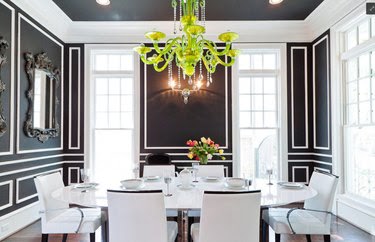Quck answer
When choosing paint colors for your home, consider the following factors:
1. Lighting: Take into account the natural and artificial lighting in the room. Lighter colors work well in rooms with ample natural light, while darker colors can add depth to rooms with less light.
2. Room size: Lighter colors can make small rooms appear larger, while darker colors can make large rooms feel cozy.
3. Mood: Different colors evoke different emotions. For example, blues and greens promote calmness, while yellows and oranges create a warm and energetic atmosphere.
4. Existing decor: Consider the furniture and accessories in the room. Choose colors that complement or contrast with these elements to create a cohesive and visually appealing space.
5. Personal preference: Ultimately, choose colors that you love and that reflect your personal style and taste. Don’t be afraid to experiment and have fun with your paint choices.
So, you’ve made the decision to give your home a fresh coat of paint. You can imagine how amazing your home will look, but first, you have to tackle the task of selecting the perfect paint colors. Apart from following trends, there are several factors to consider when choosing interior paint. To help you through this process, we have compiled a list of guidelines to ensure that you pick the best paint colors for your home’s new makeover.
Determining the desired ambiance of the room.
Image Credit:
Style Me Pretty
What kind of atmosphere do you want to create in this room? That is the key question when it comes to narrowing down your options for paint colors. Lighter shades can make a room feel brighter and more spacious, while darker hues add drama and create a cozy and intimate space. Try to envision how each color would make you and your guests feel. Generally, lighter colors work well in kitchens and living rooms, while darker colors are more suitable for bedrooms and dining rooms. However, the choice is subjective and there are no right or wrong answers.
Considering the lighting.

Image Credit:
Simphome
The appearance of a paint color can vary greatly depending on the lighting. Colors appear more vibrant and intense in natural light, while incandescent lighting brings out warmer undertones (yellows). On the other hand, fluorescent lighting accentuates cooler tones (blues). For example, the dining room shown above can pull off black walls without feeling cramped because of the natural light coming in through the floor-to-ceiling windows. However, the same lighting might be overwhelming in a room with brighter colored walls. As a general rule, avoid darker colors in poorly lit rooms, but if the room is well lit, go for it!
Drawing inspiration from decor.
Image Credit:
Design Hunter
One of the easiest ways to choose paint colors for your home is to take inspiration from specific pieces of decor. Printed textiles are a good starting point when using this method to find the perfect hue. Use your favorite accent pillow, bed throw, or artwork as a reference when creating a color palette, but try to limit yourself to a three-color scheme.
Seeking assistance in selecting your color palette.
Image Credit:
Real Simple
Color wheels and paint swatches are incredibly useful when it comes to choosing paint colors for your home, especially when coordinating interior wall colors across different rooms. While deciding on the perfect hue, consider a color palette that incorporates various shades of a single color for a polished look. These helpful tools will also save you time and stress when you’re ready to purchase paint at the hardware store. Just hand the clerk your paint chip or swatch, and they should be able to find or match your favorite color quickly.
Test out each color before making a decision.
Image Credit:
K. Smith Interiors
If you’re still having trouble choosing your paint colors, head to the hardware store and purchase sample cans of paint for the top contenders. This will allow you to paint small areas on the wall to get a better idea of how each color will look. Seeing the colors on a larger scale can help you make the final decision.
Determine your preferences for paint finishes.
Image Credit:
Setting for Four
Interior paint is available in various finishes, such as flat, matte, eggshell, satin, semi-gloss, gloss, and high-gloss (specialty paints offer other finishes). Semi-gloss, gloss, and high-gloss finishes are typically used in kitchens and bathrooms, while matte, flat, eggshell, and satin finishes are common for most interior walls. You can also combine different finishes to create a visual effect. A gloss finish is easy to clean but is also very shiny.
Let the fun begin!
Image Credit:
Remodelista
Now that the difficult part is done, it’s time to get your hands dirty. Put on your denim overalls and make sure you have all the necessary tools for a DIY painting project. Alternatively, if you don’t want to inhale paint fumes all day, you can hire a professional to do the work for you. Either way, get ready to see your dreams become a colorful reality.

